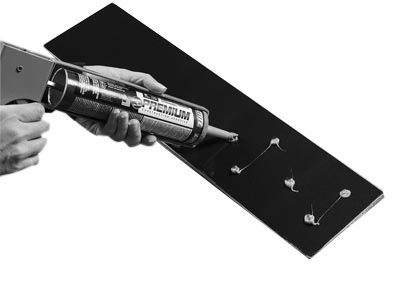Preparation Steps for Installing Glue-Down Tiles – PLEASE READ BEFORE INSTALL
TRANSPORT, STORAGE AND ACCLIMATIZATION:
Transport and store cartons in a horizontal position only as you may damage the tiles. Tiles, Wakol D 3540 cork floor adhesive, and Loba WS 2K Supra Satin polyurethane must be acclimated on-site in its original packaging. Store these items on site 48 hours prior to installation so that the flooring can adapt to the ambient conditions. Remove the tiles from the original package just before starting the installation. During storage and installation, maintain temperature and R.H. (HUMIDITY) at a level similar to the conditions which will prevail when the building is in service. This means keeping the temperature range of 65 °F to 82 °F / R.H. at 35% to 45%.

Forna Cork Flooring is a natural product and some shade variation is an inherent characteristic. To achieve a pleasing blend of shades, mix the tiles before installing cork flooring tiles.
INSPECTION:
Before installing cork flooring tiles, inspect the tiles in day light for any visible damage or defect
PREPARING THE SUBFLOOR FOR GLUE-DOWN CORK FLOORS:
The key to success when installing cork flooring tiles is to achieve a good bond between the subfloor and the tile flooring. Proper preparation of the subfloor is the most important factor to achieve this goal. Whatever the leveling compound used for leveling or repair the surface of the subfloor, it will only be as effective as the surface to which it will bond. The surface, therefore, must be even, clean and free of oil, grease, wax, soil, asphalt, curing compounds, latex, plaster, dust, paint, or any contaminant that may impair adhesion. The methods needed to properly prepare the subfloors vary with the type of substrate, and its surface condition. Some methods are used because they are cheaper, easier and faster, depending on the size of the job. However, lack of proper care in the preparation of the subfloor can lead to installation problems and failures. This technical information is intended to give recommendations for the most common existing subfloors on the market.
SUBFLOOR REQUIREMENTS FOR GLUE-DOWN CORK FLOORS:
Forna cork glue-down cork floors can be installed in interior locations in ground floor or above (not in basements) in concrete or wooden subfloors.
PROTECTION AGAINST MOISTURE:
Despite its age, there is always a risk of moisture in the subfloor, so you must ensure that a moisture barrier is efficiently installed. The subfloors must be permanently dry. In screed (cement) subfloors without radiant heating, consider the maximum moisture content below 75% RH. With the method of calcium chloride testing of moisture ensure that the emission levels of moisture are less than 3 lbs/1000ft ² / 24 h (U.S. and Canada). Subfloors that will be covered with Forna Cork glue down tile need to isolate the moisture underneath if no air gap is present. Water repellents of moisture for screeds or similar materials are not sufficient to prevent migration of any moisture into the subfloor.
UNDERFLOOR HEATING:
When installing cork flooring tiles on a subfloor which is over radiant (under floor) heating, the temperature CANNOT exceed 82 degrees F. All hot water pipes and electric heating elements MUST BE embedded in the concrete, according to the codes of the proper construction.
Step By Step Installation Instructions:
Please follow these step by step instructions, NO substitutions can be made. If you have questions please call us M-F 9 AM – 5 PM PT +1 (888) 346-0922.
SUBSTITUTIONS NOT ALLOWED








